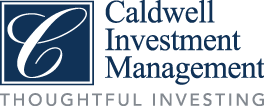Market Overview
In November, equity markets worldwide rose sharply on growing optimism about the global outlook for interest rates.
The month was marked by hopes that inflation had fallen enough for major central banks to finally end their restrictive monetary policies and perhaps even begin cutting interest rates next year. These hopes led to a strong bond market rally, with the resultant fall in yields significantly easing the pressure that equities had been under for the past several months. At the forefront of investor optimism was the Federal Reserve (“Fed”), which, as expected, kept borrowing costs steady at a 22-year high in November after adopting a “higher for longer” credo as its official interest rate policy stance. Stocks soared after a key gauge of domestic inflation suggested that year-over-year consumer price growth in October slowed more than expected, recording its best reading since July. The stock market rally gained additional momentum when several hawkish Fed officials hinted that the U.S. central bank’s forceful campaign against inflation was making progress and that further rate hikes may no longer be necessary. Investors expect the Fed to keep rates unchanged in December and begin cutting them by early summer of 2024 despite warnings from Fed officials that such a move was not under active discussion. The yield on the benchmark 10-year U.S. Treasury note ended the month at 4.33%, 60 basis points (bps) lower than a month earlier, the largest monthly drop since August 2011.
A similar situation was playing out across the Atlantic, where the aggressive rate-hiking campaigns of the European Central Bank (ECB) and the Bank of England (BOE) continued to show signs of progress, with the latest data suggesting that inflation in the eurozone and the U.K. fell faster than expected in November and October, respectively. However, unlike the U.S., where the economy has remained resilient despite a similar onslaught of interest rate increases, the most recent numbers also suggested that the common currency bloc and the U.K. were both headed for periods of economic stagnation. As a result, investors expect the ECB and BOE to hold interest rates steady in December and perhaps begin cutting interest rates in mid-2024 despite warnings from both central banks that it was pre-mature to consider such an action. The BOE left interest rates unchanged at their 15-year high in the month after having done the same at its last policy meeting in September. In November, the yield on the 10-year German bund, Europe’s principal safe-haven asset, fell 37 bps, ending the month at 2.45%.
With the third-quarter corporate earnings season in full swing, investors were able to get a better picture of how interest-rate headwinds have impacted company profits. In the U.S., 81% of the companies in the S&P 500 Index that reported results topped consensus estimates, exceeding the long-term average of 66%. The third-quarter earnings growth rate is estimated to have increased 4.8% from a year earlier. In Europe, 52% of the companies in the STOXX 600 Index that reported results posted better-than expected earnings, below the 54% that do so in a typical quarter. The year-over-year third-quarter earnings growth rate is estimated to have fallen 12.5%. In Japan, 59% of the companies in the TOPIX Index reported positive earnings surprises, which was in line with the beat rate over the past four quarters. The third-quarter earnings growth rate is estimated to have contracted 20.7% from a year earlier.
Against this backdrop, equity markets in both the developed and developing worlds jumped in November, with the former outperforming the latter. Stock markets on both sides of the Atlantic received a significant boost from data suggesting a drop in inflation and expectations that central banks will soon be cutting interest rates. In the U.S., the value of the S&P 500 increased by U.S.$3 trillion after the index recorded its best-performing November since the pandemic-fueled rebound in 2020 and its second best performance for that month since 1980. In Europe, the STOXX 600 posted its best monthly performance since November 2022, with the rate-sensitive real estate and information technology sectors recording strong gains. In Japan, the TOPIX advanced but underperformed the broader global index on concerns that the Bank of Japan may soon retreat from its ultra-low interest rate policy, as inflationary pressures continued to exert themselves. Meanwhile, in emerging Asia, China’s stock market lagged the broader market index, as foreign investors pulled money out for a fourth consecutive month on worries about the country’s stumbling post-pandemic economic recovery and the lack of a forceful response from Chinese policymakers.
Outlook
There has been a striking difference in share price performance this year between renewable energy and clean technology companies, and real asset-centric utilities, midstream energy and transportation infrastructure companies. While top line growth still favours much of the renewable energy and clean technology space, and there is plenty of runway ahead, multiple factors have pressured shares in the short run, including decelerating order activity, excess channel inventory, higher borrowing costs and relief from last year’s exceptionally high oil & natural gas prices.
This has led to a meaningful pullback in valuation for companies across an incredibly dynamic and innovative space in both renewable energy and electrification, while the opportunity set ahead remains just as great and the direction of travel in no way changed. The portfolio’s measured exposure to this higher volatility, higher risk category of infrastructure-related services, materials and technologies has served us well this year and the portfolio is designed to maintain this defensive posture, but we also believe the valuation pullback for many high-quality companies poised to capture a meaningful share of this growing market represents an exciting opportunity for investors.
The share price performance of real asset-heavy, core infrastructure securities also had to contend with the headwind of substantially higher interest rates, leading to underperformance versus most growth-oriented broad equity market indices. But the combination of defensive business models, highly predictable revenues and cash flows, and strong inflation pass-through characteristics has demonstrated resilience. This leaves the portfolio’s holdings very well-positioned to benefit from an end to the rate-hiking cycle, when we expect eventual lower interest rates will be used to discount cash flows that have been adjusted higher either for regulatory or contractual inflation-adjustment, or the indirect benefit of inflation adjustment that tends to stem from owning and operating high fixed cost, long life assets.
In summary, we believe infrastructure investment allocations have been playing a relatively commendable defensive game in an aggressive and adverse monetary policy tightening phase. With key central banks signaling that interest rates have peaked, we are optimistic that market momentum is ready to shift in favor of companies with significant upside potential such as those in our portfolio.
The information contained herein provides general information about the Fund at a point in time. Investors are strongly encouraged to consult with a financial advisor and review the Simplified Prospectus and Fund Facts documents carefully prior to making investment decisions about the Fund. Commissions, trailing commissions, management fees and expenses all may be associated with mutual fund investments. Mutual funds are not guaranteed; their values change frequently and past performance may not be repeated.
Information and opinions presented have been obtained or derived from sources believed by Lazard Asset Management LLC or its afflliates (“Lazard”) to be reliable. Lazard makes no representation as to their accuracy or completeness. All opinions expressed herein are as of the published date and are subject to change.
Allocations and security selection are subject to change. The performance quoted represents past performance. Past performance is not a reliable indicator of future results. Mention of these securities should not be considered a recommendation or solicitation to purchase or sell the securities. It should not be assumed that any investment in these securities was, or will prove to be, profitable, or that the investment decisions we make in the future will be profitable or equal to the investment performance of securities referenced herein. There is no assurance that any securities referenced herein are currently held in the portfolio or that securities sold have not been repurchased. The securities mentioned may not represent the entire portfolio.
Equity securities will fluctuate in price; the value of your investment will thus fluctuate, and this may result in a loss. Securities in certain non-domestic countries may be less liquid, more volatile, and less subject to governmental supervision than in one’s home market. The values of these securities may be affected by changes in currency rates, application of a country’s specific tax laws, changes in government administration, and economic and monetary policy. Emerging markets securities carry special risks, such as less developed or less efficient trading markets, a lack of company information, and differing auditing and legal standards. The securities markets of emerging markets countries can be extremely volatile; performance can also be influenced by political, social, and economic factors affecting companies in these countries.
Securities and instruments of infrastructure companies are more susceptible to adverse economic or regulatory occurrences affecting their industries. Infrastructure companies may be subject to a variety of factors that may adversely affect their business or operations, including additional costs, competition, regulatory implications, and certain other factors.
Certain information contained herein constitutes “forward-looking statements” which can be identified by the use of forward-looking terminology such as “may,” “will,” “should,” “expect,” “anticipate,” “target,” “intent,” “continue,” or “believe,” or the negatives thereof or other variations thereon or comparable terminology. Due to various risks and uncertainties, actual events may differ materially from those reflected or contemplated in such forward-looking statements.
Published on December 18, 2023

